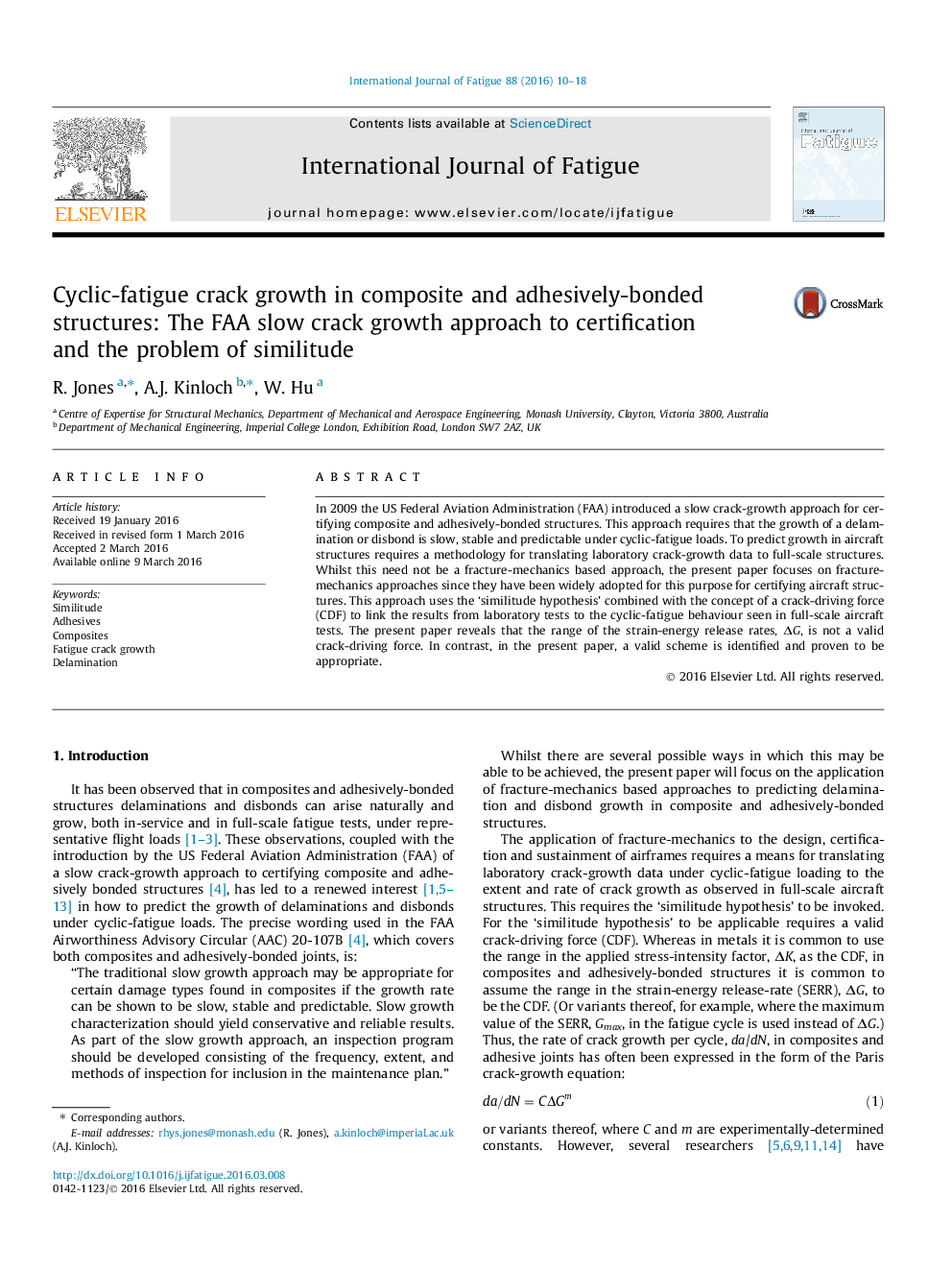| Article ID | Journal | Published Year | Pages | File Type |
|---|---|---|---|---|
| 777516 | International Journal of Fatigue | 2016 | 9 Pages |
•Fatigue crack growth in fibre-composites and adhesive joints is discussed.•The term ΔG is shown not to be a valid crack-driving force (CDF).•However, the term Δ√GΔ√G is shown to provide a valid CDF.•For a given Δ√GΔ√G, da/dN now correctly increases with an increasing R-ratio.•Use of the Hartman–Schijve equation collapses the data onto a ‘master’ curve.
In 2009 the US Federal Aviation Administration (FAA) introduced a slow crack-growth approach for certifying composite and adhesively-bonded structures. This approach requires that the growth of a delamination or disbond is slow, stable and predictable under cyclic-fatigue loads. To predict growth in aircraft structures requires a methodology for translating laboratory crack-growth data to full-scale structures. Whilst this need not be a fracture-mechanics based approach, the present paper focuses on fracture-mechanics approaches since they have been widely adopted for this purpose for certifying aircraft structures. This approach uses the ‘similitude hypothesis’ combined with the concept of a crack-driving force (CDF) to link the results from laboratory tests to the cyclic-fatigue behaviour seen in full-scale aircraft tests. The present paper reveals that the range of the strain-energy release rates, ΔG, is not a valid crack-driving force. In contrast, in the present paper, a valid scheme is identified and proven to be appropriate.
Graphical abstractAn Hartman–Schijve representation of delamination growth under cyclic-fatigue loading in double-cantilever beam tests using an unidirectional CFRP laminate. Note how the various R-ratio data collapses onto one linear ‘master’ relationship.Figure optionsDownload full-size imageDownload as PowerPoint slide
